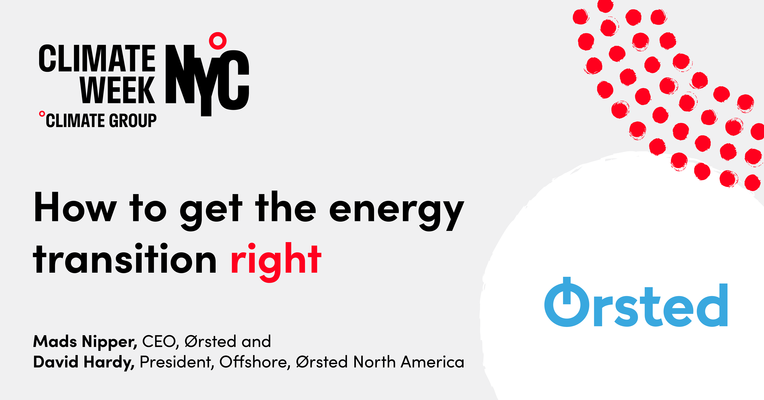The latest IPCC report underpins the severity of the situation we face: without immediate, large-scale reductions in global greenhouse gas emissions, we will likely exceed the 1.5 degree temperature limit within two decades. This is a decade sooner than the previous assessment by the IPCC and it will have devastating effects on our planet – such as higher incidences of extreme heat and increased biodiversity loss.
Let’s not mince any words here. This is a pivotal moment for humanity. Every inaction and delay in the fight against climate change puts us further off track in reaching a target that is already starting to slip away from us.
We must move beyond rhetoric now and focus on bold action with real impact. Since the production and use of energy accounts for over 70% of global carbon emissions, speeding up the renewable energy transition is the biggest single step we can take to tackle climate change.
First, the good news about the energy transition: the costs of solar and wind power have dropped tremendously, making them the cheapest source of power in most of the world. Renewable electricity also ‘expanded at its fastest pace in two decades’ in 2020, despite the pandemic. In the U.S., renewable energy represented 80 percent of new capacity last year, prior to the Biden Administration which is further expediting these priorities.
However, despite these positive factors, the energy transition is not happening at the pace and scale needed to stay within a 1.5-degree temperature pathway. We must take action now. Governments hold the key in supercharging the energy transition – so here are some concrete actions they can take:
- Commit to ambitious and long-term climate and renewable energy targets. This will signal to investors and stakeholders that the energy transition will be a cornerstone of a country’s climate plan.
- Improve the availability and affordability of land and seabed leases. Every delay during the permitting process for renewable energy projects takes us further away from achieving the rapid emissions reductions we need.
- Ensure broad public support for renewable energy projects via inclusive and transparent planning processes and by addressing community needs – i.e. through site-specific work requirements, funding for local infrastructure projects or environmental justice efforts and more.
While the energy transition requires speed; we must ensure that it’s done in a sustainable way – so that both local communities and nature can reap the many benefits that come with green energy.
Retooling the world’s energy systems will require a monumental effort in terms of the amount of infrastructure we need to build and the number of people needed to build it. The challenge that lies in front of us also offers the world a golden opportunity. We’ve seen the offshore wind industry grow and thrive in Europe for the past three decades, creating new job opportunities, reviving coastal communities and driving investment in the supply chain. The theme of this year’s Climate Week NYC is “getting it done”, and that is also what needs to happen with offshore wind power in the U.S. It’s time to accelerate that industry in the U.S., for both the environmental and economic benefits.
In the U.S., our current pipeline of awarded offshore wind projects will bring over 4,000 megawatts of clean, renewable energy to American shores, power just over two million homes up and down the east coast. And this is just the beginning. We are bringing more than green electrons to the U.S., however.
Our projects are driving billions of dollars in investments around the country both directly and indirectly – from port infrastructure, to manufacturing facilities, to shipbuilding and beyond.
The investment is great, but at Ørsted, we’re making sure that the money that comes from our activities is more than investment for investment’s sake. We are actively working with labor unions, environmental NGOs, local communities and academia to make sure that our projects are bringing value to everyone, equitably. For example:
- We are working with the North America's Building Trades Unions (NABTU) to ensure that the jobs that go into building our projects are fair and just.
- We are working with American universities and research institutes, like Rutgers University and the Woods Hole Oceanographic Institution, to better understand the ocean habitats where our projects will be and protect the wildlife that call those areas home.
- We are investing in the use of electric vehicles, like our investment with Zeem Solutions at the Port of Newark to reduce air pollution in vulnerable communities.
- We have committed to invest $250 million into a monopile manufacturing facility in Paulsboro, New Jersey along with our partner EEW. This investment will support with the creation of 500 long-term jobs.
- We, along with our partner Kiewit, are constructing the first American made offshore substation – which will help create thousands of good-paying jobs in the Northeast and across the United States. All of this and more, encompasses our approach to sustainable development and environmental justice.
The green energy transition will help us build a safer world, a stronger economy, and healthier lives. We can have all three, we just need to act now. There is no more time to waste.
